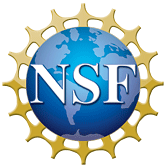Coronal densities, temperatures, and abundances during the 2019 total solar eclipse: The role of multiwavelength observations in coronal plasma characterization
To Access Resource:
Questions? Email Resource Support Contact:
-
opensky@ucar.edu
UCAR/NCAR - Library
| Resource Type | publication |
|---|---|
| Temporal Range Begin | N/A |
| Temporal Range End | N/A |
| Temporal Resolution | N/A |
| Bounding Box North Lat | N/A |
| Bounding Box South Lat | N/A |
| Bounding Box West Long | N/A |
| Bounding Box East Long | N/A |
| Spatial Representation | N/A |
| Spatial Resolution | N/A |
| Related Links | N/A |
| Additional Information | N/A |
| Resource Format |
PDF |
| Standardized Resource Format |
PDF |
| Asset Size | N/A |
| Legal Constraints |
Copyright author(s). This work is licensed under a Creative Commons Attribution-NonCommercial 4.0 International License. |
| Access Constraints |
None |
| Software Implementation Language | N/A |
| Resource Support Name | N/A |
|---|---|
| Resource Support Email | opensky@ucar.edu |
| Resource Support Organization | UCAR/NCAR - Library |
| Distributor | N/A |
| Metadata Contact Name | N/A |
| Metadata Contact Email | opensky@ucar.edu |
| Metadata Contact Organization | UCAR/NCAR - Library |
| Author |
Del Zanna, G. Samra, J. Monaghan, Austin Madsen, C. |
|---|---|
| Publisher |
UCAR/NCAR - Library |
| Publication Date | 2023-03-01T00:00:00 |
| Digital Object Identifier (DOI) | Not Assigned |
| Alternate Identifier | N/A |
| Resource Version | N/A |
| Topic Category |
geoscientificInformation |
| Progress | N/A |
| Metadata Date | 2025-07-11T15:53:45.401074 |
| Metadata Record Identifier | edu.ucar.opensky::articles:26106 |
| Metadata Language | eng; USA |
| Suggested Citation | Del Zanna, G., Samra, J., Monaghan, Austin, Madsen, C., Bryans, Paul, DeLuca, E., Mason, H., Berkey, Benjamin, de Wijn, Alfred G., Rivera, Y. J.. (2023). Coronal densities, temperatures, and abundances during the 2019 total solar eclipse: The role of multiwavelength observations in coronal plasma characterization. UCAR/NCAR - Library. https://n2t.org/ark:/85065/d7ws8z50. Accessed 19 October 2025. |
Harvest Source
- ISO-19139 ISO-19139 Metadata

